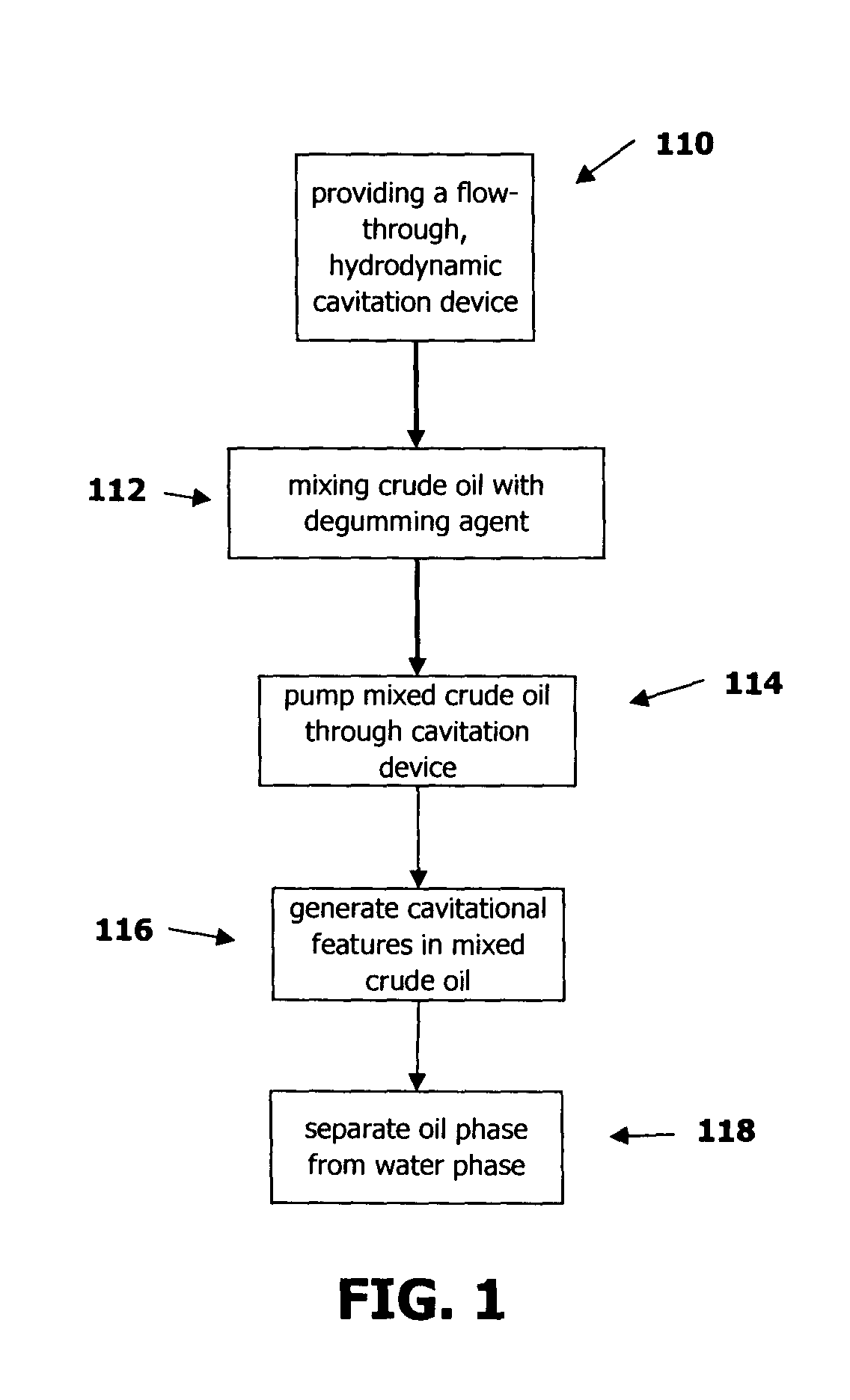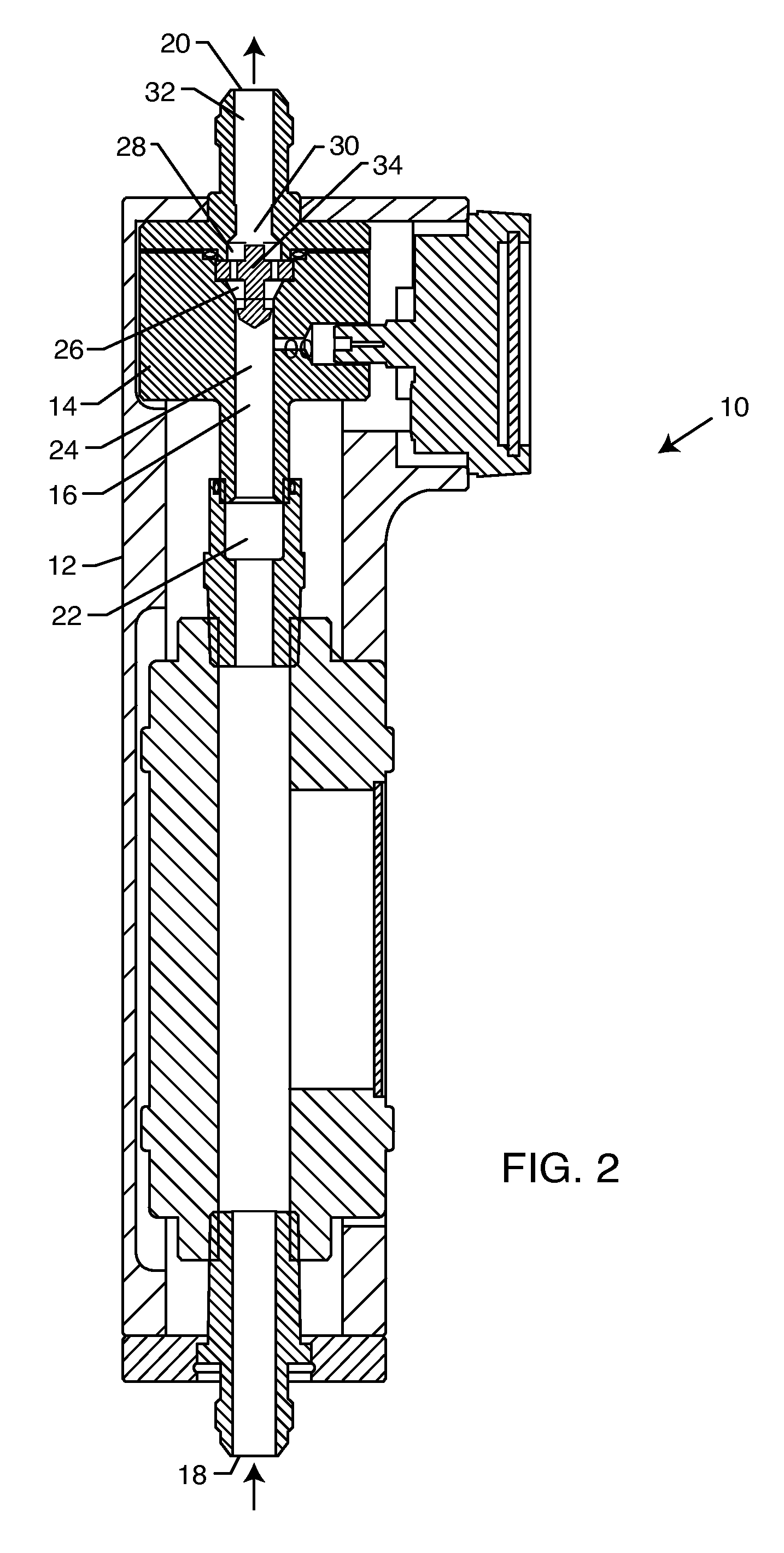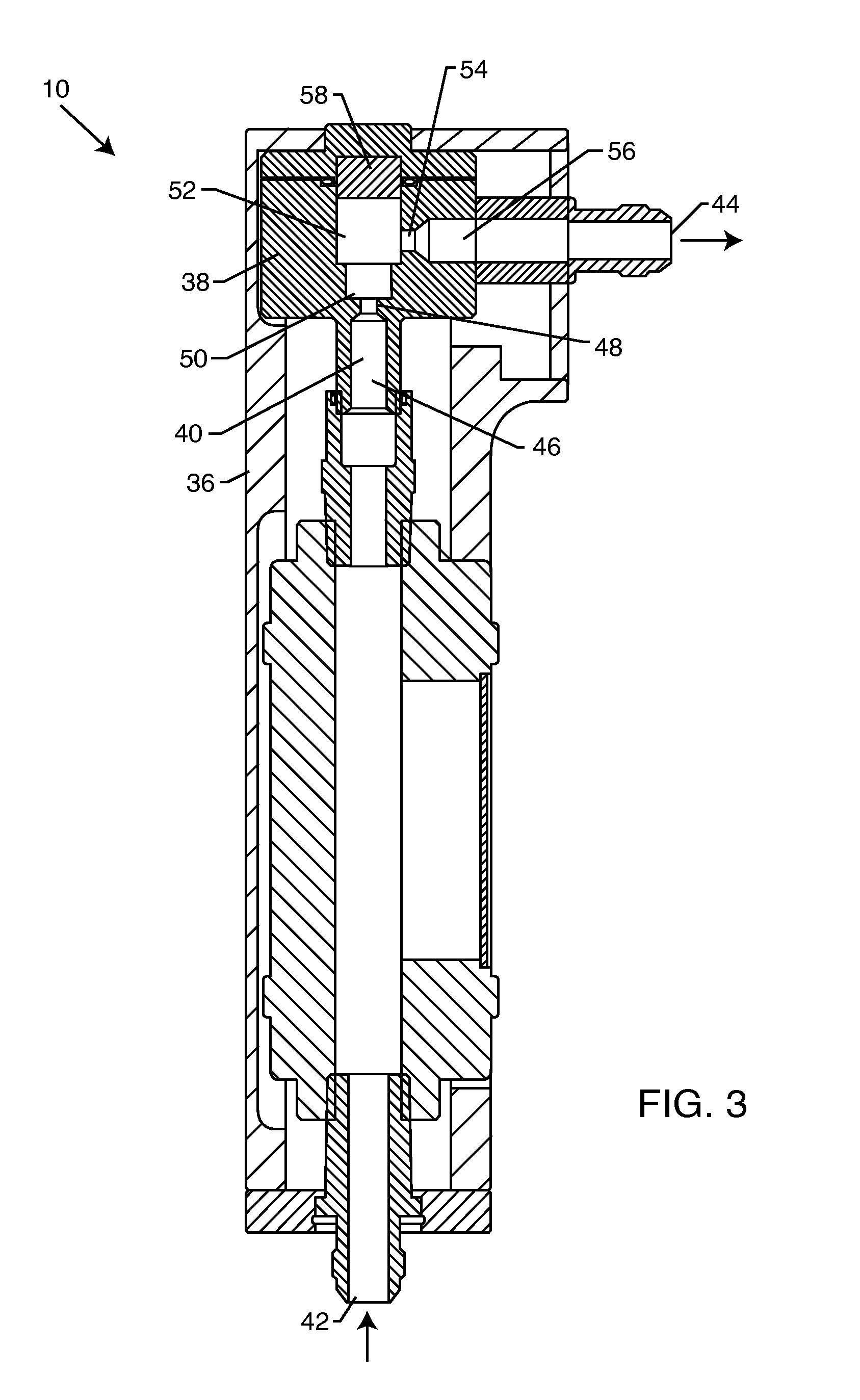Method for cavitation-assisted refining, degumming and dewaxing of oil and fat
a technology of oil and fat, which is applied in the direction of fatty-oil/fats refining, fatty acid chemical modification, water treatment, etc., can solve the problems of increased oil deterioration and accumulation of non-hydratable phosphatides, damage, and elevated pa levels in unripe oil, so as to avoid wasting energy, reduce energy consumption, and increase cavitation
- Summary
- Abstract
- Description
- Claims
- Application Information
AI Technical Summary
Benefits of technology
Problems solved by technology
Method used
Image
Examples
example 1
[0076]Ten liters of soybean oil that has been water-degummed with a conventional method, yet still, contained 137 ppm phosphorus according to analysis, was heated to 70° C. and mixed with 3% by volume of distilled water heated to 70° C. The mixture was subjected to a single pass through a flow-through cavitation device. After cavitation, the concentration of phosphorus dropped to 8.82 ppm, which corresponds to a removal of 93.6% of the phosphatides.
example 2
[0077]Ten liters of crude soybean oil that has a phosphorus concentration as high as 1,230 ppm and 5 ppm iron was heated to 70° C. and mixed with 3% by volume of distilled water heated to 70° C. The mixture was subjected to a single pass through a multi-stage, flow-through cavitation device at an inlet pump pressure of 1,000 psi. The processing temperature of the cavitation device was ambient temperature. After cavitation, the mixture was centrifuged to separate the oil from the gums and the treatment was repeated. From the results in Table 1 it can be seen that 97.2% of the phosphorus was removed after the first treatment and 97.8% of the phosphorus was removed after the second treatment. Iron concentration was lowered by 80%.
[0078]
TABLE 1Concentration, ppmAnalyticalDetectionAfter firstAfter secondImpuritymethodlimit, ppmBeforetreatmenttreatmentPhosphorusASTM1.001,23034.327.34951 / ICPIronASTM0.55114951 / ICP
example 3
[0079]As shown in Table 2, a single pass of crude soybean oil in the presence of 1% by volume of de-ionized water through a multi-stage, flow-through cavitation device resulted in the removal of 96.1% of the phosphorus. The initial temperature of the oil-water mixture was 14° C. Due to the cavitation process, the temperature was raised to 21° C. after a single passage through the multi-stage, flow-through cavitation device at a pump pressure of 1,000 psi. The cavitation-assisted degumming resulted in the formation of light-colored, non-damaged gums suitable for the production of lecithin.
[0080]
TABLE 2Concentration, ppmDetectionAfter 1ImpurityMethodlimit, ppmBeforepassagePEN 14538 ICP-OES1.001,31251.5CaEN 14538 ICP-OES1.0012920.6Fe (dissolved)EPA 60100.52Not detectedMgEN 14538 ICP-OES1.0014812.8
PUM
| Property | Measurement | Unit |
|---|---|---|
| temperatures | aaaaa | aaaaa |
| pressure | aaaaa | aaaaa |
| temperatures | aaaaa | aaaaa |
Abstract
Description
Claims
Application Information
 Login to View More
Login to View More - R&D
- Intellectual Property
- Life Sciences
- Materials
- Tech Scout
- Unparalleled Data Quality
- Higher Quality Content
- 60% Fewer Hallucinations
Browse by: Latest US Patents, China's latest patents, Technical Efficacy Thesaurus, Application Domain, Technology Topic, Popular Technical Reports.
© 2025 PatSnap. All rights reserved.Legal|Privacy policy|Modern Slavery Act Transparency Statement|Sitemap|About US| Contact US: help@patsnap.com



